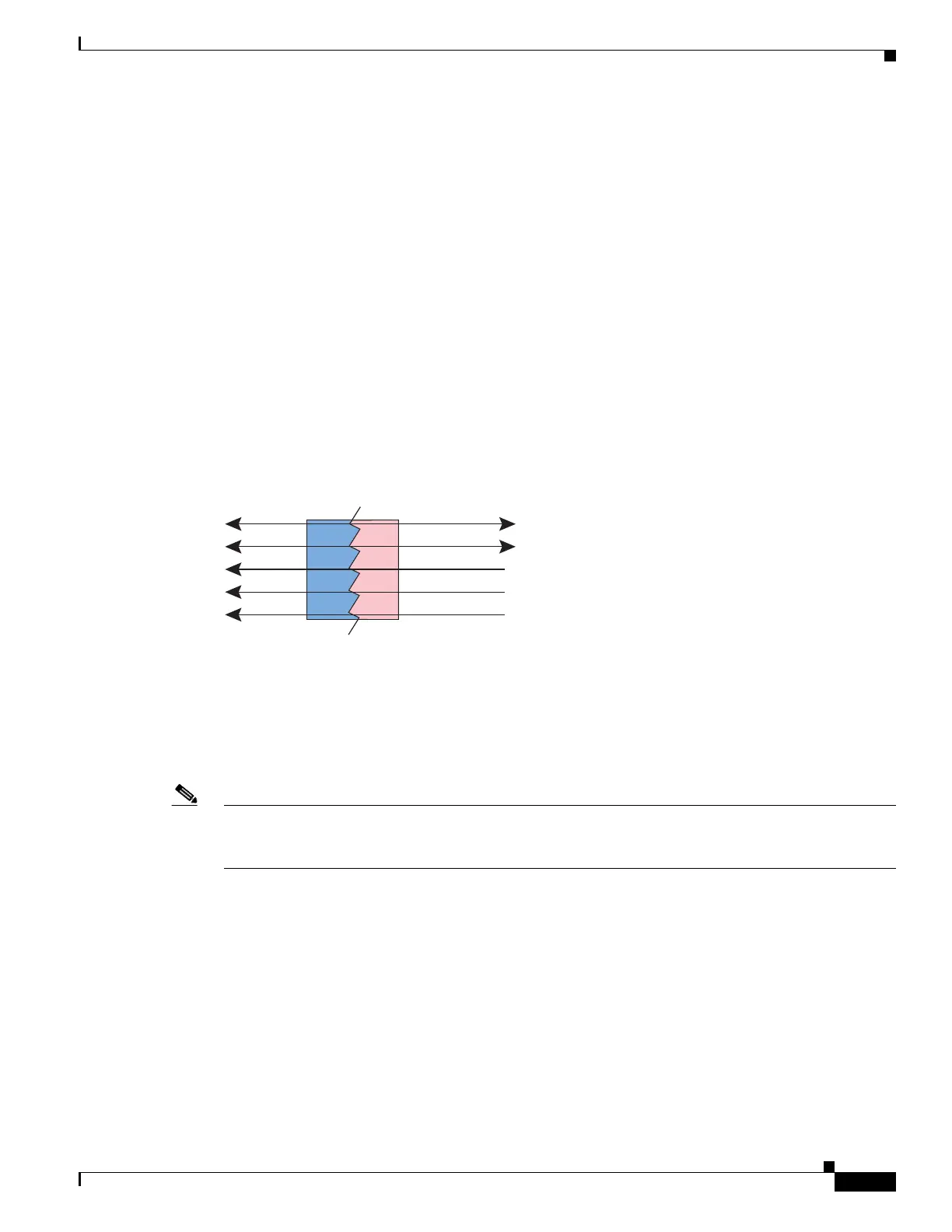9-31
Cisco ASA Series Firewall CLI Configuration Guide
Chapter 9 Network Address Translation (NAT)
Static NAT
Other Mapping Scenarios (Not Recommended)
The ASA has the flexibility to allow any kind of static mapping scenario: one-to-one, one-to-many, but
also few-to-many, many-to-few, and many-to-one mappings. We recommend using only one-to-one or
one-to-many mappings. These other mapping options might result in unintended consequences.
Functionally, few-to-many is the same as one-to-many; but because the configuration is more
complicated and the actual mappings may not be obvious at a glance, we recommend creating a
one-to-many configuration for each real address that requires it. For example, for a few-to-many
scenario, the few real addresses are mapped to the many mapped addresses in order (A to 1, B to 2, C to
3). When all real addresses are mapped, the next mapped address is mapped to the first real address, and
so on until all mapped addresses are mapped (A to 4, B to 5, C to 6). This results in multiple mapped
addresses for each real address. Just like a one-to-many configuration, only the first mappings are
bidirectional; subsequent mappings allow traffic to be initiated to the real host, but all traffic from the
real host uses only the first mapped address for the source.
The following figure shows a typical few-to-many static NAT scenario.
Figure 9-10 Few-to-Many Static NAT
For a many-to-few or many-to-one configuration, where you have more real addresses than mapped
addresses, you run out of mapped addresses before you run out of real addresses. Only the mappings
between the lowest real IP addresses and the mapped pool result in bidirectional initiation. The
remaining higher real addresses can initiate traffic, but traffic cannot be initiated to them (returning
traffic for a connection is directed to the correct real address because of the unique 5-tuple (source IP,
destination IP, source port, destination port, protocol) for the connection).
Note Many-to-few or many-to-one NAT is not PAT. If two real hosts use the same source port number and go
to the same outside server and the same TCP destination port, and both hosts are translated to the same
IP address, then both connections will be reset because of an address conflict (the 5-tuple is not unique).
10.1.2.27 209.165.201.3
Inside Outside
10.1.2.28 209.165.201.4
10.1.2.27 209.165.201.5
10.1.2.28 209.165.201.6
10.1.2.27 209.165.201.7
Security
Appliance
248769

